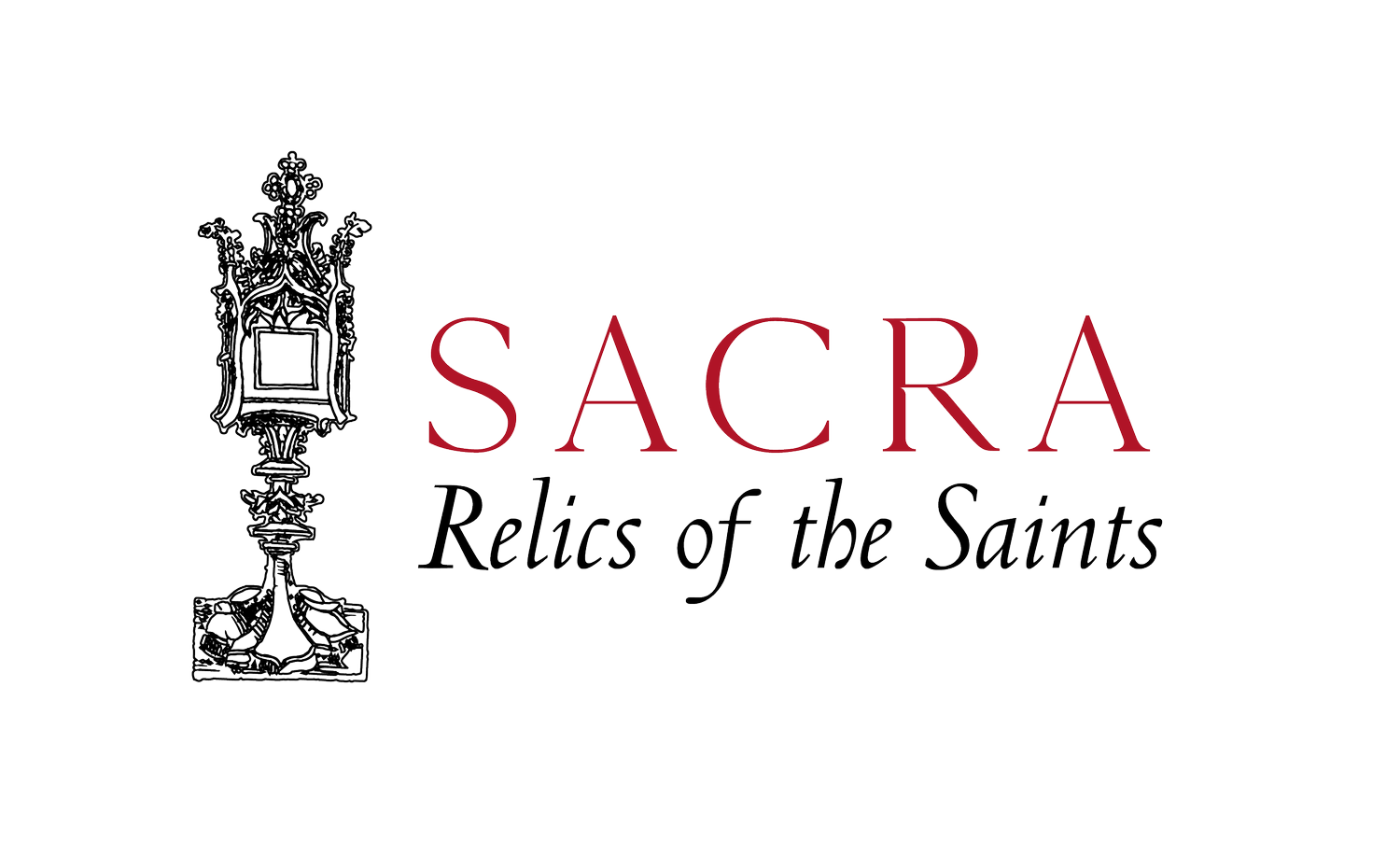Relics in the Christian Aesthetic Tradition, a First Look
Charlemagne, Aachen Domschatz
In the larger Christian aesthetic tradition, liturgical arts especially, bridge the gap between decorative objects to adorn and practical, working objects for use. Vestments, church plate, and appointments (candlesticks, furniture, etc.), serve a double purpose when the worship of God is concerned.
A whole panoply of churchwares.
Relics are, in our judgement, an interesting, separate category. Nothing about a chair makes it sacred, only its use as the celebrant’s chair, for example. A relic, however, even when badly neglected, is an object that is sacred in se. In this sense it has a greater objective importance than another kind of sacramental (beads, holy images, etc.), but it is also necessary a working object. It is meant to be brought out, taken in procession, venerated, kept near the sick, brought to the suffering, and treasured by the faithful.
It is the natural catholic tendency to adorn and embellish the holy, to set it apart, to mark it as ‘other’ from the quotidian. But relics often did begin as this sort of regular, day-to-day object. We shall take a stark example: How can a woman’s work apron become the centre of a town’s procession? When that woman gave her life in a concentration camp for the love of Christ.
St Teresa Benedicta of the Cross, martyred in a gas chamber in 1942. Her work apron is kept as a relic in her convent in Cologne.
Even our bodies, which may be the most familiar, the most taken for granted things about us, become exalted. Not as the object of some Hellenistic ideal of beauty, but because they are lowly instruments of God in heaven, who himself became small. We are supposed to be ‘temples of the Holy Spirit,’ but this fact is so very often lost on us. That fact can make a fresh impression on us when we look at the saints. Locks of hair, a simple bone, a torn cloak become the source of inspiration, spiritual renewal, and healing for devout Christians.
The woolen habit of St Francis of Assisi.
This change—the move from an ordinary object to the relic, the mundane to the sacred—is really the story of a man cooperating with God’s grace in every little detail of his life. What makes a normal object holy is the man using it as a means of his salvation. St Teresa of Ávila told her sisters, ‘know that even when you are in the kitchen, our Lord moves amidst the pots and pans.’
The writing-desk of St John Henry Newman.
How, then, does an ordinary triffle become a relic? God’s grace, which we know is normally invisible to us. This is a good reminder—we do not always know the saints that walk among us. A thing is a relic because its owner is a saint. A man is a saint because he lets God’s grace work through him, and God continues his work through those relics.
The relics, a piece of St Thomas More’s jawbone and tooth and St John Fisher’s ring which toured the United States. Photograph: Marlene Quaroni FC
So how do relics fit into the Christian aesthetic tradition? It has been the task of so many artisans and craftsmen throughout history to put a point on this gradual change, to bring out what is hidden from our sight. To show with a touch of gold, a flourish, some glimmering glass, the extraordinary holiness of a little bone, a set of beads, a tunic. Reliquaries point our mind’s eye toward the reality of the thing so we cannot miss it. The men and ladies who laboured in their hidden way are brought into the spotlight by Holy Mother Church.
A fourteenth-century reliquary with gold and enamel.
It was the work of centuries of Christian artists to craft reliquaries that could in some way show the hidden holiness of the relics they hold. These reliquaries also aid the faithful on a purely human, psychological level to understand what is before them, and thereby be more readily disposed to appreciate its importance.
It may seem quaint, perhaps, to design a reliquary that holds an arm bone in the shape of an arm. What other shape should it be?
As different schools and influences developed, reliquaries became their own art form, often mixing media and presenting a ‘living’ image of the relic. Arm reliquaries and bust reliquaries are easily the most common of these kind. While a relic is always a relic, even without a reliquary (and a reliquary without a relic is ‘just art,’), the reliquary frames our experience of the relic, and can in very many cases bring us in, or present a barrier toward our experience of connection and devotion with it. This is especially true for people (like most moderns) who are newer to the idea of relics.
Leaving aside for another time the objection of ‘unnecessary extravagance,’ in objects relating to divine worship, we might wonder why reliquaries in our day take more or less the same few shapes.
Without spending too much time decrying the times and lamenting the decline of Christendom, we can, in the same breath, be glad of a resurgence in interest in real Christian art. Sacred music, vestments, church architecture and the like all enjoy a renaissance, and there is no reason why reliquaries cannot follow suit. Some artisans have begun to reintroduce lost forms, such as the reliquary bust and ‘talking’ reliquaries (arms, feet, etc.), and we suspect that many more will follow.
We can end this very brief introduction with a few more eccentric historical examples to pique our inspiration.




















